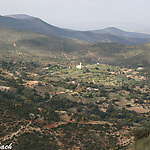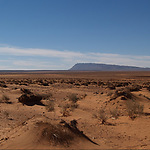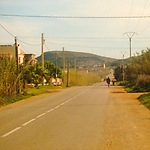What we want to find out
For the people we want to reach, the Fortune Cooker is a completely new product. It is different from the gas hobs or wood fires they’re used to. This means that, as a designer, there is no base that can be used to derive from. It also means that the user does not have tools for comparison during the decision making process. The choice to buy the Fortune Cooker is a much bigger leap than the simple purchase of a new gas hob. Using that knowledge, what we want to find out can roughly be divided in two questions:
- What can be reasons for the user to buy the product?
- What can be reasons for the user the keep using the product?
The ultimate goal of the Fortune Cooker is that it can one day successfully reduce CO2-emission and deforestation by replacing wood fires for cooking. This means that one day, the Fortune Cooker should be able to replace all other cooking appliances. This applies to gas hob users as well – if the Fortune Cooker replaces the other cooking device, this means that people don’t have to buy the gas hob they normally use anymore. This means that the Fortune Cooker should pose viable advantages over the current cooking appliance, but it should fulfil the current appliance’s functions as well.
Based on the above, there are several fields of research that could be interesting.
|
General background information |
To get a clear view of who the test person is and where the test person lives and cooks.
|
|
Facilities in and around the house
|
To get a clear view of the living conditions of the test person, which can influence the decision to buy and use a Fortune Cooker.
|
|
Meals
|
To know which kind of meals are usually prepared and if these can also be prepared with the Fortune Cooker and to gain insight into the way of cooking.
|
|
Time and duration of cooking
|
To know whether or not the Fortune Cooker suits in their daily planning and if sun is available at the times of cooking.
|
|
Feedback from the cooking process
|
To know whether or not the test person understands the cooking process, how they know the cooking process goes well and how the Fortune Cooker fits with this kind of feedback.
|
|
Degree of experiments
|
To know whether the test person is capable and willing to change her cooking habits in terms of recipes and meals.
|
|
Degree of tradition
|
To know whether the test person is capable and willing to change her cooking habits in terms of the way of cooking. Also to know her ‘history in cooking’, to know whether the test person is capable and willing to change to another cooking device.
|
|
Fortune Cooker demonstration
|
To know the opinion of the test person on the Fortune Cooker and whether she is capable and willing to use it.
|
Test locations
As mentioned before, the Fortune Cooker’s target group mainly consists of people cooking on wood fire. Those people can definitely be found in Morocco. However, Morocco is a country with a surface area ten times bigger than that of our small country, and with only twice as much inhabitants. Our target group does not exactly live a stone’s throw away from a seaside resort like Saïdia. Even though traveling is quite cheap here, there was no budget to go on weekly trips through Morocco. Therefore, we made the initial plan to perform research on our target group on faraway locations, and to combine this with user tests with people nearby resembling the target group.
The test location nearby is in Saïdia, and would therefore be suited for a process of co-creation. Also, Farida holds good connections with these people, as they are her neighbours. The already established relationship of trust can make sure that they are more willing and comfortable to give us feedback on the Fortune Cooker.
In the map on page 29 you can see the different villages that would be suitable for target group research. Based on the time needed to travel there, the living conditions of the inhabitants and the village’s surroundings, Aïn Sfa and Bouarfa turned out to be the most suitable villages for research.
Due to a few hurdles that had to be overcome, we did research in two BniSnassen villages: Aïn Sfa and Madagh. This gives us three testlocations: Aïn Sfa, Madagh, and Saïdia.


